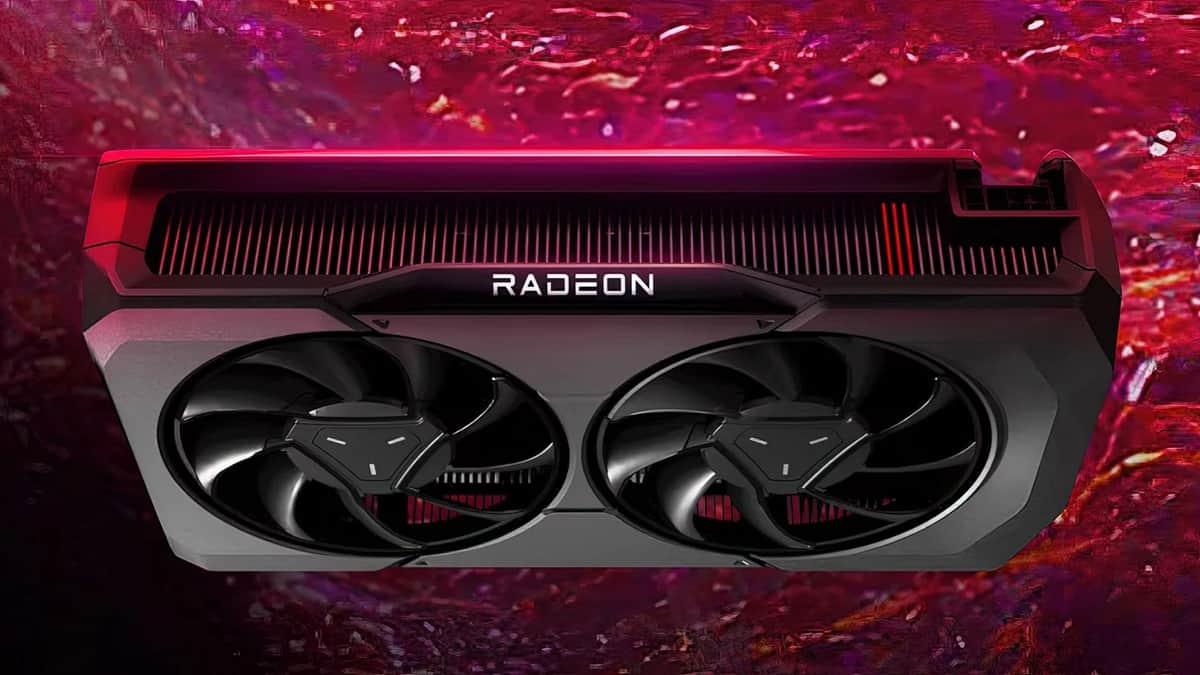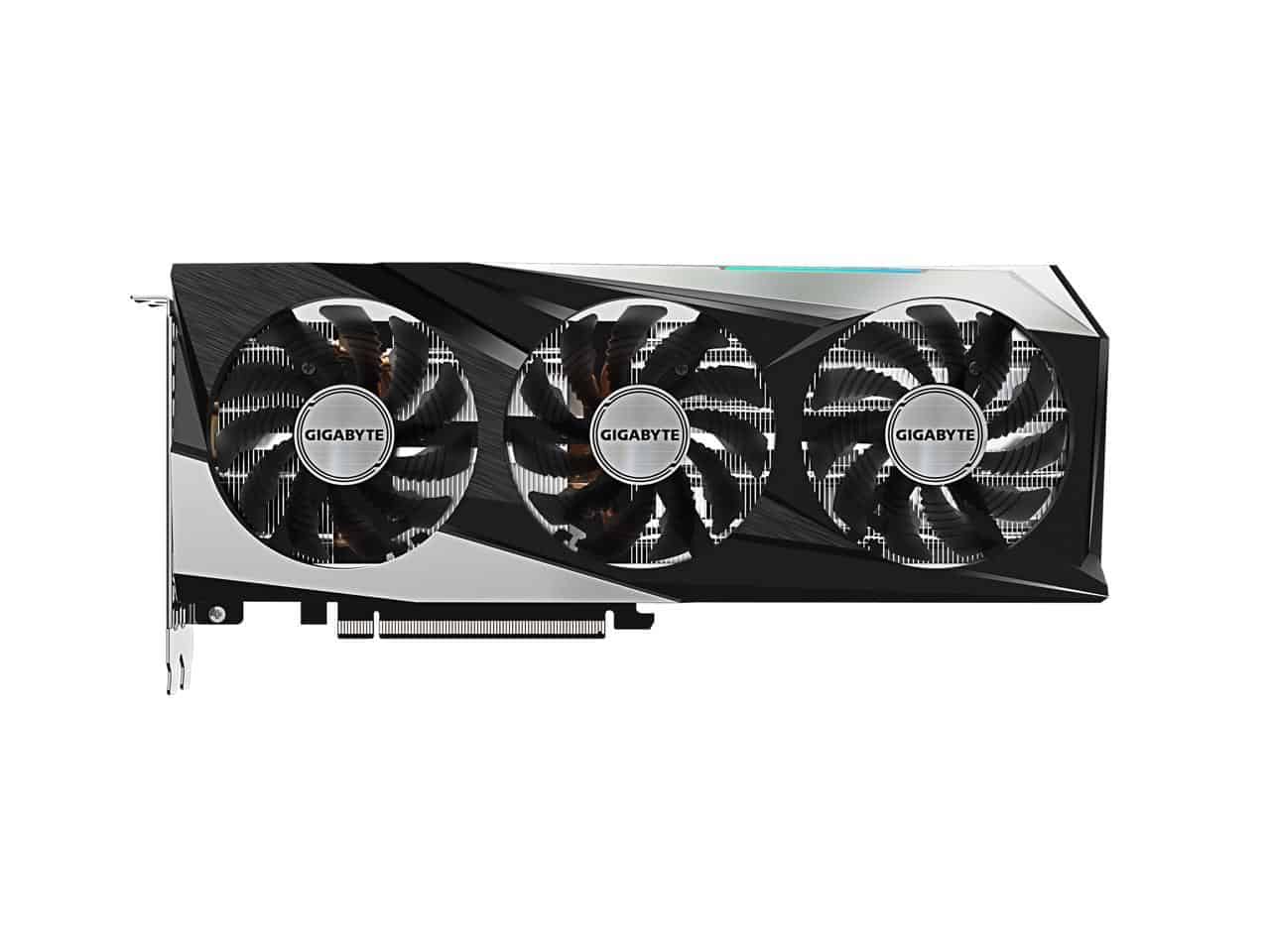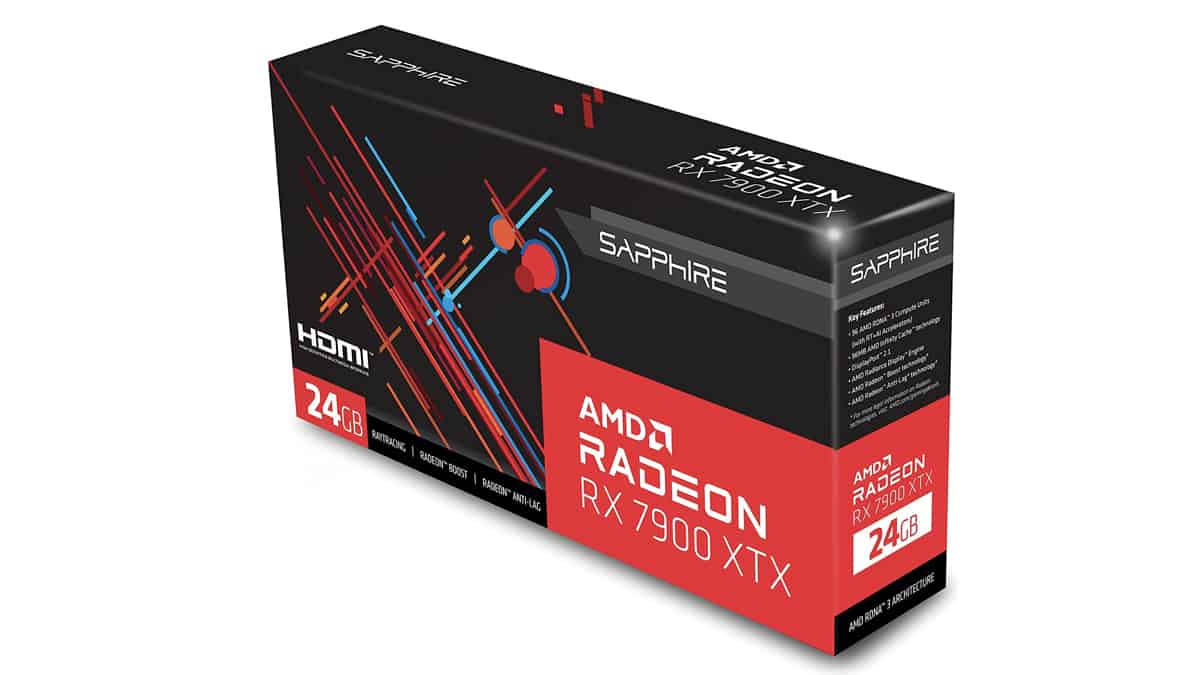RX 7600 vs RX 7900 XTX – AMD vs AMD levels

Table of Contents
For those looking to buy AMD’s new midrange offering, this article will compare the RX 7600 vs RX 7900 XTX. As the tech world eagerly anticipates the launch of AMD’s Radeon RX 7600, it’s an apt time to explore how this upcoming GPU stacks up against the highly powerful Radeon RX 7900 XTX. With an MSRP of $269, the RX 7600 represents AMD’s next offering in the mid-range graphics card segment.
On the other end of the spectrum, the RX 7900 XTX, released at the end of 2022, has already demonstrated its prowess in high-end gaming and professional tasks. In this article, we dive deep into a comprehensive comparison between the two GPUs, highlighting the architectural differences, performance benchmarks, and potential impact on your gaming or content creation experience.
RX 7600 Quick links
Amazon US
- RX 7600
- XFX Speedster QICK308 Radeon RX 7600 Black
- MSI Gaming Radeon RX 7600
- Gigabyte Windforce RX 7600
- Sapphire Pulse AMD Radeon RX 7600
Best Buy
Newegg
RX 7600 vs RX 7900 XTX: Specs Comparison
The RX 7600 packs 8GB GDDR6 memory, which is par for the course in the mid-range segment. This is enough to deliver smooth performance for most modern games at 1080p settings. The RX 7900 XTX, however, has taken a significant leap forward, featuring an enormous 24GB GDDR6 memory. This substantial memory pool enables the RX 7900 XTX to handle data-intensive applications, high-resolution textures, and complex 3D rendering tasks, often required by professionals and hardcore gamers.
The RX 7600’s TDP is a mere 165W and only needs one 8-pin PCIE power connector. This indicates it’s an energy-efficient GPU that won’t have a significant power draw or require a sophisticated cooling solution. Conversely, the high-performance RX 7900 XTX comes with a TDP of 355W. This suggests that the RX 7900 XTX would require a robust cooler and a more substantial power supply unit to maintain optimal performance.
| Details | RX 7600 | RX 7900 XTX |
|---|---|---|
| Architecture | Navi 33 | Navi 31 |
| Stream Processors | 2048 | 6144 |
| Texture Units | 128 | 384 |
| Ray Accelerators | 32 | 96 |
| Base Clock | 2250 MHz | 1855 MHz |
| Boost Clock | 2655 MHz | 2269 MHz |
| Memory (VRAM) | 8GB GDDR6 | 24G GDDR6 |
| Memory Interface | 128-bit | 384 bit |
| Memory Bandwidth | 288 GBps | 960GBps |
| TDP | 165 W | 355W |
| Price | $269 | $999 |
The RX 7600 has a 128-bit memory bus interface, which should provide ample bandwidth for most mid-range applications. The RX 7900 XTX, on the other hand, steps it up with a broader 384-bit memory interface.
In summary, the RX 7900 XTX outperforms the RX 7600 in every specification, but it’s crucial to remember that they are designed for different market segments. The RX 7600’s charm lies in its energy efficiency and the value it offers to mid-range gamers, while the RX 7900 XTX targets enthusiasts and professionals who demand top-tier performance regardless of power consumption or cost.
RX 7600 vs RX 7900 XTX: Price
The anticipated RX 7600 is geared towards mid-range gaming, with a price tag estimated at around $269. It’s a potential steal for gamers seeking performance without breaking the bank, especially for 1080p gaming.
On the opposite end, AMD’s current top-tier model, the RX 7900 XTX, is priced at $999. With its high-end features and powerful performance, it’s aimed at enthusiasts and professionals, justifying the premium cost.
In essence, while the RX 7600 targets budget-friendly yet decent performance, the RX 7900 XTX is a go-to for those seeking top-of-the-line power regardless of the price tag.
RX 7600 vs RX 7900 XTX: Performance
While we lack concrete performance benchmarks for the RX 7600, a thoughtful analysis of its specifications provides a roadmap to potential performance. Its Navi 33 architecture, backed by 2048 cores, hints at promising mid-range gaming capabilities. The GPU’s 8GB of GDDR6 memory is tailored for moderate gaming scenarios, offering enough room for contemporary game textures and elements at 1080p. With a 2250 MHz base clock that can boost up to 2655 MHz, we can expect commendable operational efficiency from the RX 7600. However, with AMD’s Fidelity FX Super Resolution (FSR) similar to Nvidia’s DLSS, you can expect greater performance at higher resolutions. Meaning that for games with FSR enabled this card will punch well above its weight.
However, compared to the RX 7900 XTX, it’s clear that the RX 7600 targets a different performance bracket. The RX 7900 XTX is a testament to the power of AMD’s RDNA 3 architecture, coupling a chiplet design that merges 5nm and 6nm process nodes for enhanced performance and cost efficiency. This GPU boasts a massive leap in performance, offering up to 54% more performance per watt than its RDNA 2 predecessors.
The RX 7900 XTX flaunts an impressive array of up to 96 new compute units, pointing towards unparalleled rendering and computational capabilities. Coupled with up to 24GB of high-speed GDDR6 memory and a wider memory bus, it’s well-equipped to handle demanding gaming scenarios, high-resolution 3D rendering, and data-intensive applications.
The RX 7600 boasts 32 ray accelerators, but when compared to the RX 7900 XTX’s 96 it shows that the RX 7900 XTX will have dramatically increased ray tracing performance. For those who want to experience high-fidelity gaming then the obvious choice would be the RX 7900 XTX.
In essence, while the RX 7600 appears to be a competent choice for mid-range gaming, the RX 7900 XTX stands out as an unrivaled champion in the high-end GPU sector, offering unmatched power, efficiency, and innovative features.
RX 7600 vs RX 7900 XTX: Final thoughts
Selecting between the RX 7600 and RX 7900 XTX comes down to your needs and budget. The RX 7600 is a perfect piece of hardware for mainstream PC gamers and creative individuals who want great performance at an affordable price, with estimated power similar to its predecessors but with more advanced features.
The RX 7900 XTX, on the other hand, is a behemoth designed for those who demand the absolute best. With its powerful performance and advanced features, it’s geared toward enthusiasts, pro gamers looking for high frame rates, and content creators who require high computational power. It would be an excellent upgrade for anyone looking to own one of the best GPUs for gaming.
Remember, though, that these are based on the released specifications and predicted performance. The actual performance will only be confirmed once the RX 7600 hits the market.
The Nvidia Geforce RTX 4060 Ti is also releasing soon and will be its main midrange competitor. With its variants launching in May and July, we believe that these two graphics cards will be in direct competition. Read our comparison of the RX 7600 vs RTX 4060 Ti to find out which is best for you.
Is the 7900XTX faster than the 7600?
Yes, based on the official specifications, the RX 7900XTX will be significantly faster than the upcoming RX 7600. The 7900XTX features more cores, higher clock speeds, and a larger memory interface, which will lead to greater overall performance. However, it’s important to note that the 7900XTX is also more expensive and consumes more power, so it’s targeted toward a different market segment. The RX 7600 is designed to offer solid performance at a more accessible price point for mainstream gamers.


